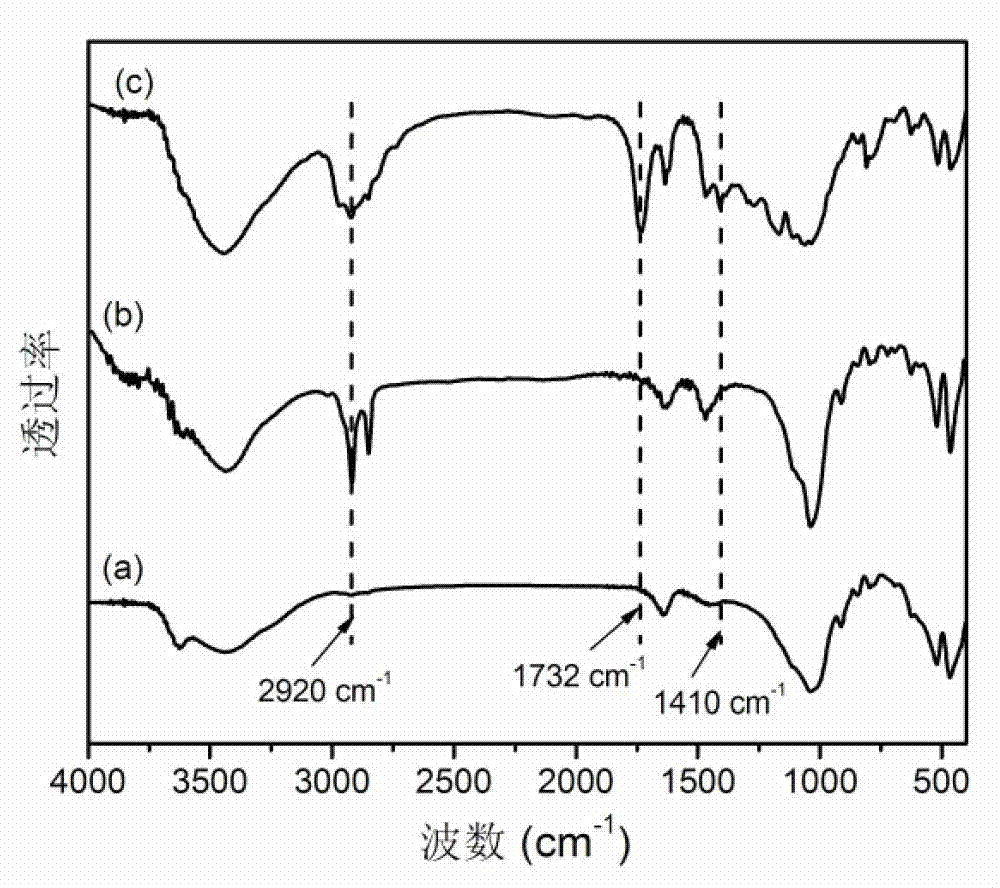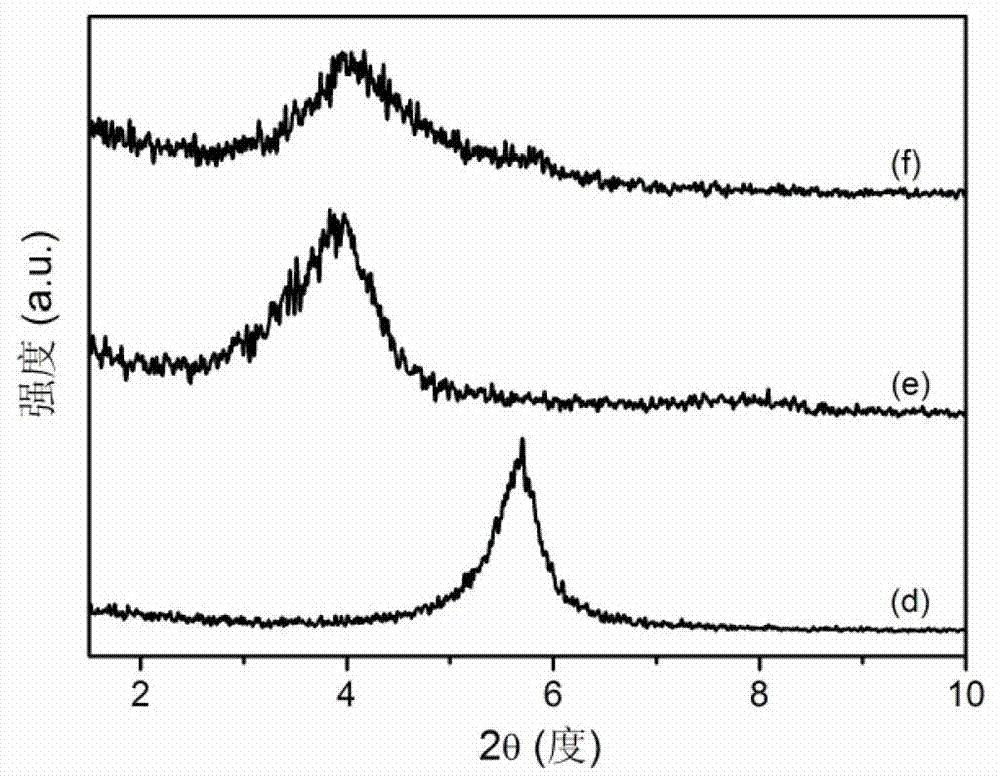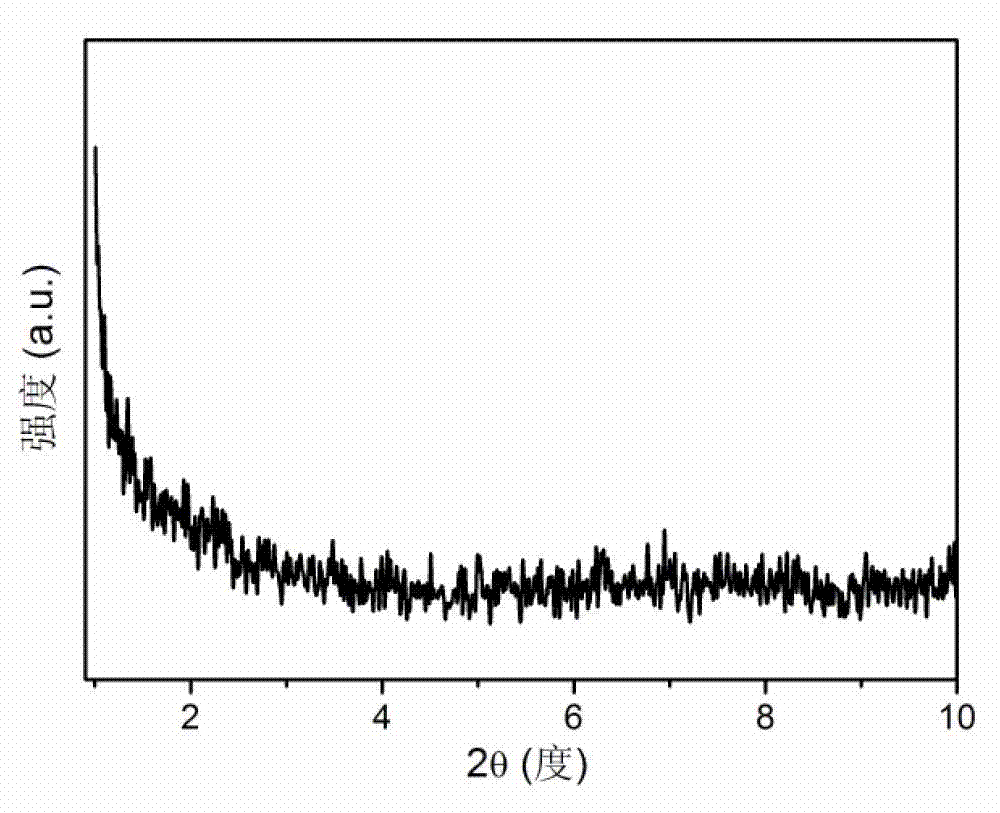Sulfhydryl-double bond reaction-based acrylate ester/montmorillonite composite and preparation method
An acrylate and composite material technology, applied in the field of acrylate/montmorillonite nanocomposite materials, can solve the problems of adverse effects on the environment and human health, large sheet steric hindrance effect, unfavorable industrial production, etc., and achieves reactivity and lipophilicity. good effect, less environmental pollution, and broad industrial application prospects
- Summary
- Abstract
- Description
- Claims
- Application Information
AI Technical Summary
Problems solved by technology
Method used
Image
Examples
Embodiment 1
[0042] (1) Dissolve 30g of 3-aminopropyltriethoxysilane and 40.17g of trimethylolpropane triacrylate in 50mL of dichloromethane, and dissolve 3-aminopropyltriethoxysilane in a nitrogen atmosphere and ice-water bath. The ethoxysilane solution was added dropwise to the trimethylolpropane triacrylate solution, and the drop was completed in 0.5 hours. Then it was slowly raised to room temperature, and the reaction was continued for 24 hours. After the reaction, the solvent was evaporated to dryness with a rotary evaporator to obtain the product amino polyfunctional acrylate silane coupling agent;
[0043] (2) Mix 117.8g of mercaptoacetic acid, 55g of trimethylolpropane, 5.2g of p-toluenesulfonic acid and 180mL of cyclohexane, add it to a flask with a water separator, and heat to reflux under a nitrogen atmosphere until there is no water produced, after cooling to room temperature, with saturated NaHCO 3 Washed three times with aqueous solution, then washed with anhydrous Na 2 S...
Embodiment 2
[0055] (1) Take 25.0g of 3-aminopropyltriethoxysilane and 52.7g of ditrimethylolpropane tetraacrylate, dissolve them in 50mL of dichloromethane respectively, and dissolve 3-aminopropyl triethoxysilane in nitrogen atmosphere and ice-water bath. The propyltriethoxysilane solution was added dropwise to the ditrimethylolpropane tetraacrylate solution, and the drop was completed in 0.5 hours. Then it was slowly raised to room temperature, and the reaction was continued for 24 hours. After the reaction, the solvent was evaporated to dryness with a rotary evaporator to obtain the product amino polyfunctional acrylate silane coupling agent;
[0056] (2) Mix 101g of 3-mercaptopropionic acid, 30.0g of pentaerythritol, 3.3g of concentrated sulfuric acid and 140g of toluene, add it into a flask with a water separator, heat and reflux under a nitrogen atmosphere until no water is produced, cool to room temperature, and use saturated NaHCO 3 Washed three times with aqueous solution, then ...
Embodiment 3
[0062] (1) Dissolve 20.0g of γ-mercaptopropyltrimethoxysilane, 1.12g of triethylamine and 35.9g of pentaerythritol tetraacrylate in 40mL of anhydrous tetrahydrofuran, and dissolve γ-mercaptopropyltrimethoxysilane in nitrogen atmosphere and ice-water bath. Add the mixed solution of trimethoxysilane and triethylamine dropwise into the pentaerythritol tetraacrylate solution, and drop it in 0.5 hours. Then it was slowly raised to room temperature, and the reaction was continued for 24 hours. After the reaction, the solvent was evaporated to dryness with a rotary evaporator to obtain the product amino polyfunctional acrylate silane coupling agent;
[0063] (2) Mix 135.9g of 6-mercaptohexanoic acid, 30.0g of pentaerythritol, 6.63g of concentrated sulfuric acid with 130g of toluene and 50g of dioxane, add them to a flask with a water separator, and heat to reflux under a nitrogen atmosphere until there is no water produced, after cooling to room temperature, with saturated NaHCO 3 ...
PUM
| Property | Measurement | Unit |
|---|---|---|
| diffraction angle | aaaaa | aaaaa |
| diffraction angle | aaaaa | aaaaa |
Abstract
Description
Claims
Application Information
 Login to View More
Login to View More - R&D
- Intellectual Property
- Life Sciences
- Materials
- Tech Scout
- Unparalleled Data Quality
- Higher Quality Content
- 60% Fewer Hallucinations
Browse by: Latest US Patents, China's latest patents, Technical Efficacy Thesaurus, Application Domain, Technology Topic, Popular Technical Reports.
© 2025 PatSnap. All rights reserved.Legal|Privacy policy|Modern Slavery Act Transparency Statement|Sitemap|About US| Contact US: help@patsnap.com



